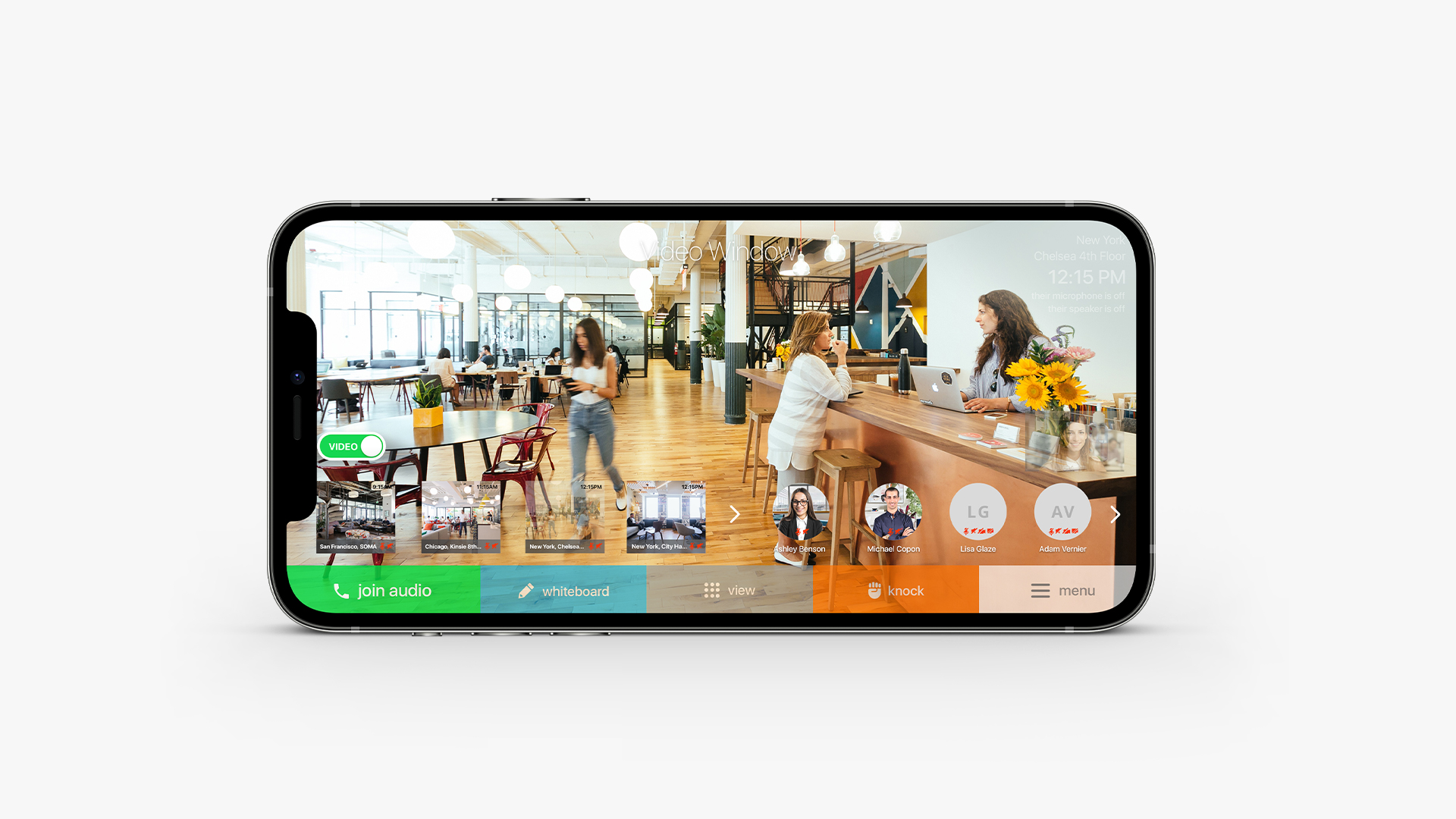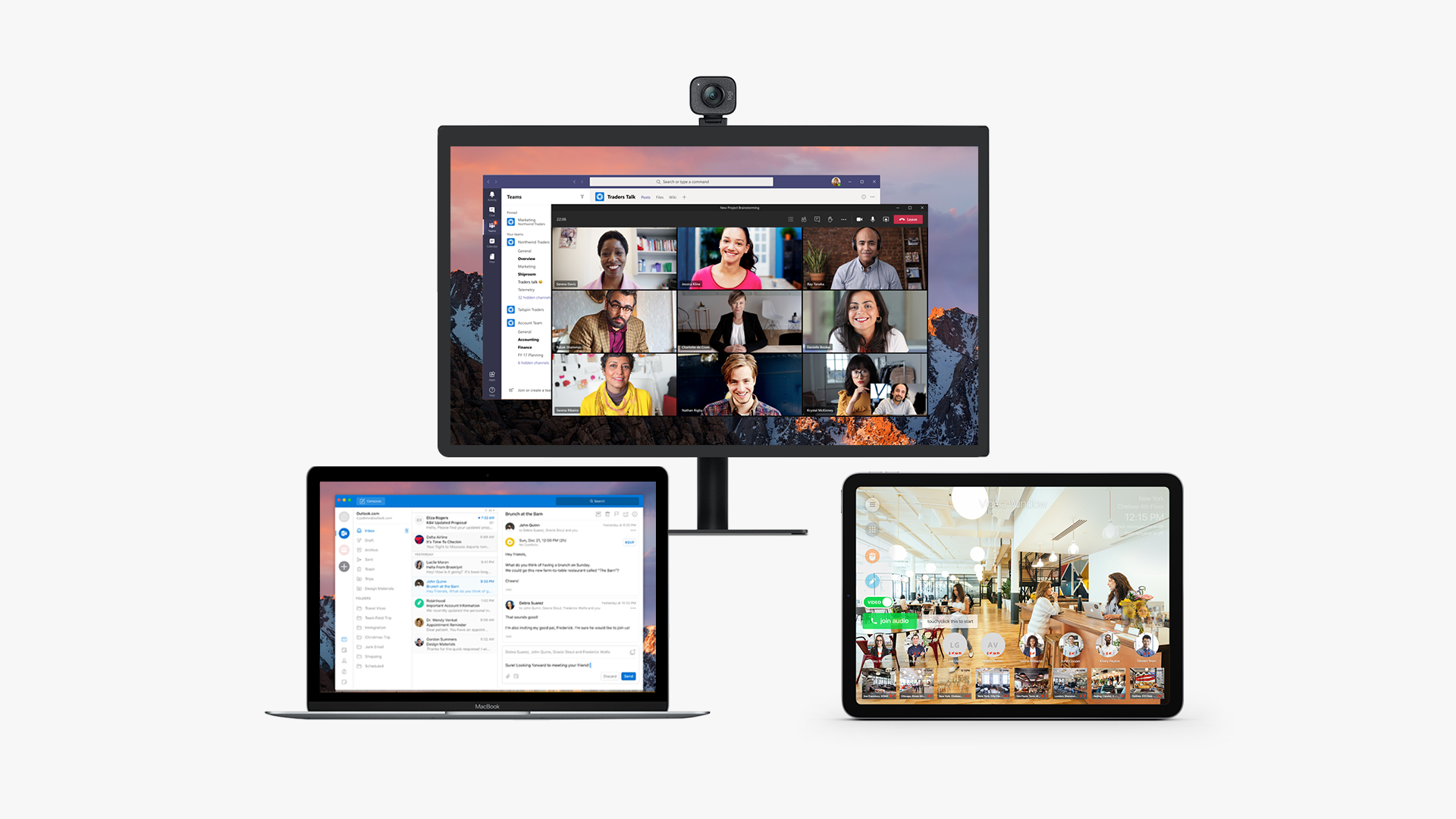This video portal connects home and the office; it’s brilliant and terrifying
Video Window Remote is a two-way portal connecting home workers and office employees

The company behind Video Window, the always-on video portal that connects co-workers based in different offices, has announced a version of its product for home workers.
Video Window Remote lets remote staff stream a live feed of their company’s offices to their Android or iOS device. In turn, video of their home setup appears on the screen at the other end.
The purpose of Video Window, according to parent company Collaboration Squared, is to minimize the sense of loneliness and invisibility felt by remote workers everywhere during the pandemic.
- Here's our list of the best business webcams right now
- Check out our list of the best business monitors out there
- We've built a list of the best headsets for conference calls around
In light of research that suggests remote staff are more likely to be passed over for career advancement, the company also hopes Video Window can help equalize the playing field between office employees and those working from home.
Finally, from a productivity perspective, the service is supposed to create impromptu opportunities for conversation and collaboration that are unavailable with traditional video conferencing, which requires at least an element of premeditation.
However, knowing what we now know about the pitfalls of video calls, it’s hard not to imagine Video Window Remote giving rise to a few embarrassing (perhaps even career-ending) incidents. And what about the opportunity for abuse by employers? Or the environmental impact? We put our thoughts to Daryl Hutchings, Collaboration Squared CEO.
What could possibly go wrong?
One of the most convincing cases against a system like Video Window Remote, whereby office staff can observe colleagues at home, is that they are open to abuse by employers that want to keep a beady eye on staff.
Sign up to the TechRadar Pro newsletter to get all the top news, opinion, features and guidance your business needs to succeed!
However, Hutchings says there are a number of systems in place to prevent the product from creating opportunities for Big Brother-style invasions of privacy, even in the wrong hands.
For example, the feed only stays live for a specified period of time (e.g. during work hours), deactivating itself automatically after a certain time of day. The video toggle feature, meanwhile, means remote employees will always know when they are on camera; if a feed is coming through from the office, it can be assumed the webcam is active too.
“We’ve had CEOs ask us before, can they watch all the Video Window’s from their browser without anyone knowing. We flat out rejected these requests,” Hutchings told TechRadar Pro.
“That’s also why video toggle removes the inbound feed too. You are either on video and see and be see, or off video with media off in all directions.”

Asked about security measures and the opportunity for “Zoom-bombing”, Hutchings explained that calls between just two devices are automatically protected by end-to-end encryption (E2EE). Calls involving three or more (which presumably accounts for most, given the format) are not protected by E2EE, but that’s apparently in the works.
“In addition, Video Window is actually more secure than traditional meeting services,” he said. “There is no recording option and no guest access option, meaning only registered and authenticated users and devices can access a Video Window Group. No chance of video bombing here!”
With sustainability creeping higher up the priority list for businesses with each passing year, it’s also fair to ask whether it is right to encourage people to stream bandwidth-thirsty video content for hours on end, with little purpose other than to cultivate an atmosphere.
Hutchings conceded this is an area that needs to be looked at closely, but he noted there are a few measures and optimizations in place to minimize the drain on resources. For instance, remote users are limited to 360p resolution to cut bandwidth consumption, and the sleep screen is pitched pure black to conserve as much energy as possible.
In future, he says emerging technologies such as edge AI (complex processing performed on-device as opposed to in-cloud) will help detect whether someone is in a room. If not, the frame rate could be lowered automatically, or the screen darkened.

An unanswerable problem
There is a case to be made that Video Window Remote solves many more problems than it creates. An attempt to combat the mental health implications of extended remote working is certainly laudable and the dynamic between remote and in-person employees will require attention in the months and years to come.
And although the idea of delivering a livestream to the office might provoke a shudder today, it’s possible this is the kind of thing that slowly begins to feel normal after a while, as it becomes part of working culture.
However, while Hutchings was able to bat away many of our questions with confidence, there remains an important factor outside of his control: the capacity of humans for mishap.
If people are capable of absentmindedly taking their Zoom call to the toilet with them (or worse in the case of one particular New Yorker columnist), surely they are capable of forgetting they are live on Video Window Remote as well.
Regardless of the quality and number of failsafes designed to eliminate the opportunity for mishap, Video Window Remote is still likely to generate a few headlines for all the wrong reasons.
- Check out our list of the best office chairs and best office desks around

Joel Khalili is the News and Features Editor at TechRadar Pro, covering cybersecurity, data privacy, cloud, AI, blockchain, internet infrastructure, 5G, data storage and computing. He's responsible for curating our news content, as well as commissioning and producing features on the technologies that are transforming the way the world does business.